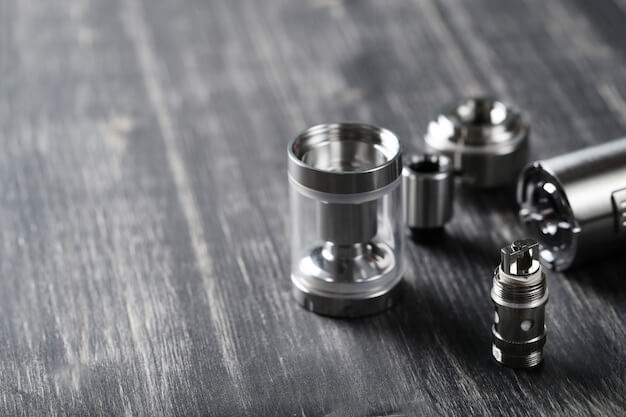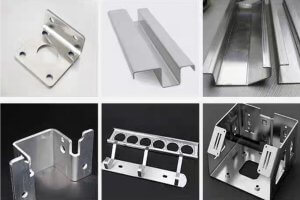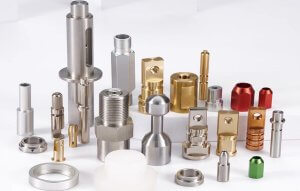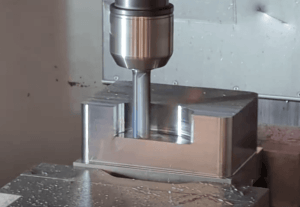Introduction to Automotive Injection Molding Materials
The application of different materials in automotive injection molding has been subjected to rigorous debates, particularly between magnesium alloys and aluminum. Both exhibit strong performance characteristics yet depict distinctive differences influencing their selection for specific applications or design requirements within the auto industry. Similarly, another face-off exists within the realm of manufacturing among polycarbonate and acrylic materials. They both have plausible benefits but vary considerably, creating a difficult choice for manufacturers when selecting the ideal material for distinct production processes.
- Magnesium Alloys: Maintains an impressive strength-to-weight ratio, lighter than aluminum which makes them preferred for weight reduction goals in automotive design.
- Aluminum: Universally used due to its lightness, excellent corrosion resistance, and high thermal conductivity. However, factors like cost put it at a disadvantage compared to magnesium alloys.
- Polycarbonate: Known for its impact resistance, dimensional stability, and transparency allowing for a wide range of product designs.
- Acrylic: Provides superior optical clarity, rigidity, but slightly lower impact strength than polycarbonate.
What are Magnesium Alloys?
Magnesium alloys are composite materials which primarily consist of magnesium but also include other elements such as aluminum, zinc, lithium and others. Renowned for their light weight, these alloys boast high-strength properties, superior machinability, excellent damping capacity and good corrosion resistance. As a result, they find wide applications across various fields including electronics, aerospace and notably the automotive industry where it’s primary usage is in reducing vehicle structural weight while maintaining strength and integrity.
A noteworthy benefit of using magnesium alloys over traditional metals lies in its superior strength-to-weight ratio. This attribute, coupled with easy recyclability, makes them an energy-efficient material choice. Compared to typical steel or even aluminium components, parts made from magnesium alloys can significantly slash down the overall vehicular weight. This consequentially leads to improved fuel economy and considerably minimized emissions – presenting a more sustainable solution amidst rising global concerns on environmental preservation.
The Role of Aluminum in Automotive Injection Molding
Aluminum holds a prominent position in the realm of automotive injection molding, principally due to its lightweight properties and robustness. These attributes make it significantly advantageous for improving fuel-efficiency and structural integrity in vehicles. Apart from these benefits, aluminum is known for its excellent thermal conductivity and corrosion resistance, qualities conducive to prolonging an automobile’s lifespan. However, there are a few notable drawbacks associated with the use of aluminum in this context; primary among them is its high cost relative to other materials like steel or plastic. The manufacturing process can also be complex, leading to further escalation in production expenses.
In relation to manufacturers incorporating aluminum into their vehicle design and manufacture processes, global names such as Ford and Audi serve as sterling examples. The Ford F-150 truck range extensively uses military-grade aluminum alloys to reduce weight while maintaining durability and strength. Similarly, Audi employs aluminum in various models’ frames and engines to enhance performance and fuel efficiency, demonstrating the key role this material plays on the automotive stage.
Polycarbonate vs Acrylic: Which is Better?
In the world of injection molding, two materials commonly face-off: polycarbonate and acrylic. Polycarbonate stands out with its durability, boasting high impact resistance that makes it hard to break or crack. This material also fares well under varying temperature conditions, able to withstand both extreme heat and cold. Another key attribute of polycarbonate is its optical transparency; hence it’s often used in applications where clarity is important.
On the other hand, acrylic has its unique strengths too. It is lightweight which allows for easier handling and installation. The material also offers impressive UV-resistance, making it an excellent choice for outdoor applications. In addition, acrylic tends to be more cost-effective than polycarbonate, proving a crucial deciding factor for many manufacturers.
To illustrate their real-life application, consider daily-use products like eyeglasses and car headlights. Eyeglasses often utilize polycarbonate due to its shatter-resistant property and clear optics. Conversely, acrylic’s lightness and UV resistance make it the preferred material for aquariums and exterior signage. Through these examples, we can see how each material serves different purposes based on distinctive performance attributes.
Detailed Comparison of Workability, Strength, Applications, and Cost-chain Factors of Polycarbonate and Acrylic
Polycarbonate and acrylic are two popular materials used in injection molding. They have distinct characteristics that make them suitable for different applications.
1. Workability
Polycarbonate and acrylic differ in terms of workability:
- Polycarbonate: Polycarbonate is a strong and hard material that can be easily molded and machined. It has good dimensional stability and can withstand high temperatures during processing.
- Acrylic: Acrylic is a lightweight material that is also easy to mold and machine. It has good transparency and can be polished to achieve a high-gloss finish.
2. Strength
Polycarbonate and acrylic have different strength properties:
- Polycarbonate: Polycarbonate is known for its high impact resistance and toughness. It can withstand heavy loads and is often used in applications that require durability and strength.
- Acrylic: Acrylic is not as strong as polycarbonate but still offers good impact resistance. It is suitable for applications that do not require as much strength but prioritize optical clarity and aesthetics.
3. Applications
Polycarbonate and acrylic find applications in various industries:
- Polycarbonate: Polycarbonate is commonly used in automotive parts, safety helmets, electrical hardware, and bulletproof glass. Its strength and impact resistance make it suitable for applications that require protection and durability.
- Acrylic: Acrylic is used in windows, lenses for glasses, decorative showcases, and protective casings for solar panels. Its transparency, high gloss, and lightweight nature make it ideal for applications that prioritize aesthetics and visibility.
4. Cost-chain Factors
When considering cost-chain factors, polycarbonate and acrylic have different considerations:
- Polycarbonate: Polycarbonate is generally more expensive than acrylic due to its superior strength and impact resistance. However, it offers better long-term value in applications that require durability and protection.
- Acrylic: Acrylic is a cost-effective option compared to polycarbonate. It provides good optical clarity and aesthetics at a lower price point, making it suitable for applications where strength is not the primary concern.
5. Summary
In summary, polycarbonate and acrylic have different workability, strength, applications, and cost-chain factors. Polycarbonate is known for its strength, impact resistance, and suitability for applications that require durability. Acrylic, on the other hand, offers good transparency, high gloss, and cost-effectiveness, making it suitable for applications that prioritize aesthetics and visibility. Consider the specific requirements of your project to determine which material is most suitable for your needs.
Comparison and Evaluation Between Polycarbonate and Acrylic
In deciding between polycarbonate and acrylic as a choice of material for injection molding, several factors come under consideration. Polycarbonate is famed for its commendable resistance to impact together with clarity almost akin to glass. It’s characterized by its durability, making it suitable for products intended to withstand high levels of strain like safety glasses or bulletproof windows. However, the cost-chain factor tends to tilt adversely due to complex production processes necessitating specific temperatures and pressures.
On the other hand, acrylic offers a more economical alternative, thanks to ease in its workability that enables quick shaping cutting and drilling without requiring special tools. Although less robust than polycarbonate, this thermoplastic shines in applications demanding transparency coupled with ultraviolet (UV) resistance such as signage, displays or aquariums.
- Workability: Acrylic excels courtesy of easy shaping alternatives whereas polycarbonate demands more sophisticated methodologies.
- Strength: Polycarbonate proves superior with remarkable flexibility, resisting fractures better than the brittle nature depicted by acrylic.
- Application: While acrylic finds extensive use where UV resistance and aesthetic appeal are paramount, durable polycarbonate suits tough conditions where resilience takes priority.
- Cost chain factors: The uncomplicated production procedures make acrylic more budget-friendly compared to polycarbonate’s intricate process which implies higher costs due to energy consumption and specific tooling requirements.
In conclusion, the selection between these two materials heavily depends on an analysis transcending single usability and manufacturing aspects. Each case should ideally embrace the unique balance between strength, versatility, aesthetics, and price appropriate for its tailored context.
Conclusion: Magnesium alloys as viable alternative to Aluminum and Acrylic versus Polycarbonate in Automotive Injection Molding
In concluding this subject, the material choice for automotive injection molding depends majorly on various factors including cost-effectiveness, performance capacity, durability and weight. Analyzing these qualities, some consider magnesium alloys as a potential alternative to aluminum given their lighter weight, higher strength-to-weight ratio, excellent casting properties, recyclability, superior damping capacity, and resistance to corrosion. However, aluminum still holds advantages with regard to formability, availability and established production techniques.
-
Magnesium Alloys – Lighter weight, better strength-to-weight ratio, excellent casting properties which are essential for automotive.
-
Aluminum – Cost-effective, highly formable, widely available and proven method of productions.
Similarly, both polycarbonate and acrylic have unique aspects that may prove beneficial depending upon specific application needs. Polycarbonates excel in toughness, temperature resistance, UV resistance and optical clarity while acrylics hold an edge in terms of aesthetic quality and easy machinability.
-
Polycarbonate- Higher impact resistant, heat resistant, ability to block harmful UV rays but low scratch resistant.
-
Acrylic – High transparency, glossy look, easy to manufacture but not shock proof.
Given these considerations, it could be possible to use magnesium alloys as suitable alternatives to aluminum in certain applications or contexts; similarly polycarbonate might be superior to acrylic based on the specific requirements and vice versa. As such, there cannot be a one-size-fits-all answer to these material selection challenges, rather decisions should be made on a case-by-case basis considering the specific demands of each project.
Other Articles You Might Enjoy
- Magnesium Alloys: Are They a Viable Alternative to Aluminum in Automotive?Injection Molding Materials Face-Off: Polycarbonate vs. Acrylic
Material Choice Importance in Automotive Manufacturing: Magnesium Alloys vs Aluminum In the world of automotive manufacturing, the choice of materials is instrumental as it affects overall performance, aesthetics, cost-efficiency, and…
- CNC Machining Materials Deep Dive: Acrylic vs. Polycarbonate for Transparent Parts
CNC Machining Materials Deep Dive: Acrylic vs. Polycarbonate for Transparent Parts Computer Numerical Control (CNC) machining is a production process that involves the use of computers to control machine tools,…
- CNC Machining and the Quest for Lightweight Materials: Aluminum-Lithium Alloys
CNC Machining and the Quest for Lightweight Materials: Aluminum-Lithium Alloys CNC machining, standing for 'Computer Numerical Control', serves as a cornerstone of modern manufacturing processes. It leverages computer programming to…








